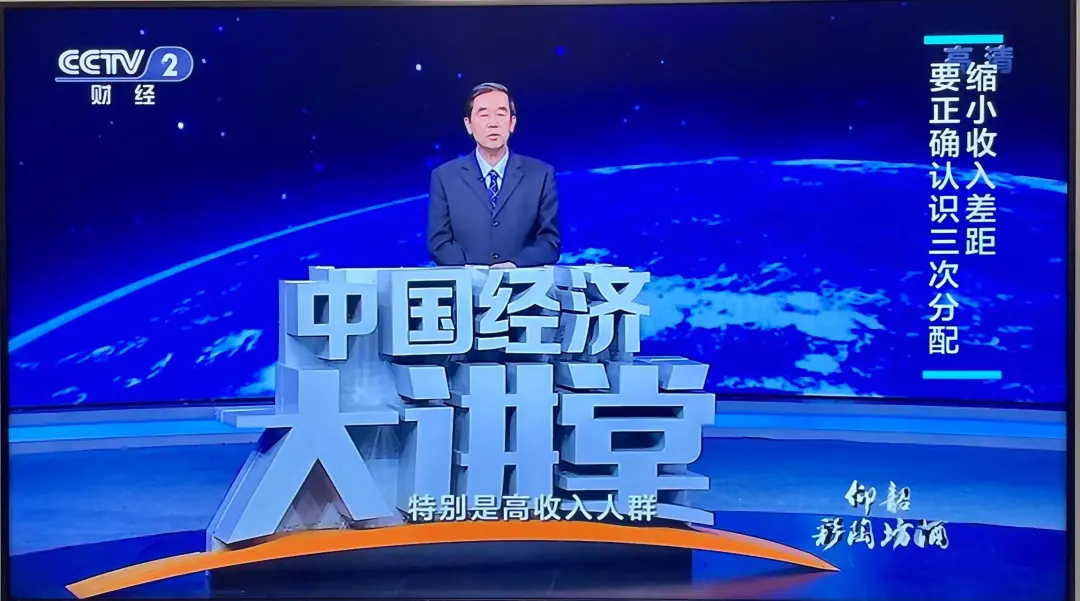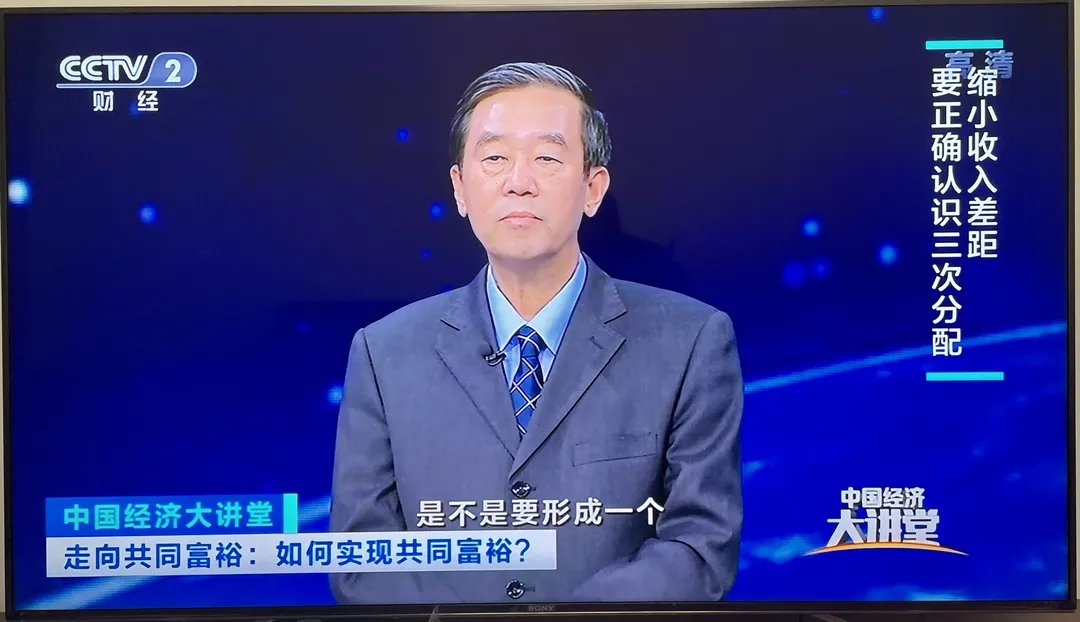Oct. 17th, 2021 witnessed the tenth conference of Commitee for Financial and Economic Affairs which highlighted development centred on the people and common prosperity promoted with high-quality development. Prof. Shi Li, Senor Professor of Liberal Arts, Dean of Institute for Common Prosperity and Development from SPA was invited to illustrate approaches to common prosperity in China Economic Forum, CCTV. How to achieve common prosperity? How to follow the blueprint of common prosperity? How to implement common prosperity step by step? The following full text is compiled from Prof. Shi Li's speech.

Shi Li, Senor Professor of Liberal Arts, Dean of Institute for Common Prosperity and Development, Professor of SPA, ZJU
What's our goal to achieve common prosperity?
Promoting common prosperity should be carried out in stages with different goals, which can be divided into the following three stages:
I. From now to 2035, substantive progress should be made in achieving common prosperity for all, with per capita national income reaching $25,000 and the income gap significantly narrowed.
II. From 2036 to 2049, the centenary of the founding of PRC, China will basically achieve common prosperity and double per capita national income compared to one in 2035. Income and property will be distributed in a more reasonable way.
III. From 2050 to 2121, the second centenary of the founding of CPC, China will fully achieve common prosperity for all, rank the top 10% for the world's per capita national income, and achieve the full social sharing.
What paths should we take to achieve common prosperity? How to avoid going on the wrong track?

I. To Achieve Common Prosperity, Promote the Strategy of High-quality Development
First of all, continue to innovate, create wealth and make a big cake. Only on the basis of development can we ahieve sharing. Only after sharing can we achieve real common prosperity. Achieve sharing in development and development through sharing.
II. To Achieve Common Prosperity, Narrow Down the Gap Between Urban and Rural Areas
First, reform the land institution to stimulate the vitality of land elements and increase farmers' land incomes. For example, Lingnan Township, Shangyu District, Shaoxing, Zhejiang uses idle homestead to develop B&B to increase farmers' incomes.
Second, develop multiple industries and diversify employment. For example, the development of grape planting industry in Gaibei Town, Shangyu District, Zhejiang supports the local economic development zone. As a result, local farmers have at least three sources of income: agricultural product income, working wage and collective income from collective dormitory rental.
Third, encourage technical talents to work for rural areas, and increase the technology level and added value of agriculture. Taking Wuliangshan Silkie Chicken from Jingdong, Yunnan, one fixed poverty alleviation zone assigned for Zhejiang University as an example. Zhejiang University set up a team of science and technology to help them make an all-round supply chain including breeding, improving breeds, expanding market and building a brand. Thus, a huge progress in the quality of silkie chicken from Jingdong happened and contributed to local poverty alleviation.
Fourth, improve the level and quality of rural public services as well as living conditions. Let good production elements fully circle around urban and rural areas, with capitals and talents from cities to villages and labor forces, especially excessive ones, from villages to cities. Meanwhile, secure the equal right, the equal opportunity of employment, the equal pay for equal work, the equal social security and public service for rural population and labor forces immigrating to cities, so that they can be well integrated.
III. To Achieve Common Prosperity, Narrow Down the Gap Between Regions
First, make labor forces flow free. Then, strengthen the infrastructure construction. Common prosperity is not equilibrium in every aspect but people's livelihood including income, social security and property.
IV. To Achieve Common Prosperity, Narrow Down the Gap Between Income Groups.
Narrow down the gap between urban and rural areas, then between regions, and finally, between income groups. To achieve it, reform the income distribution system. Foster production element markets for the primary distribution, priortize taxation and its adjustment role in redistribution, establish social environments, institutions and policies for tapping charitable distribution to its full potential.
V. To Achieve Common Prosperity, Evenly Distribute Basic Public Services
First, extend the beneficiary range of social security.
Second, boost the level of social security, especially one in elderly care and health care.
Third, promote sharability to more evenly distribute public service resource within one region so that everyone can enjoy high-quality public service resource.
Prof. Shi Li stressed that, for common prosperity, we should be fully confident, through constant effort and tens of years' struggle, to finally achieve it one day. Then all people will enjoy their full development!


